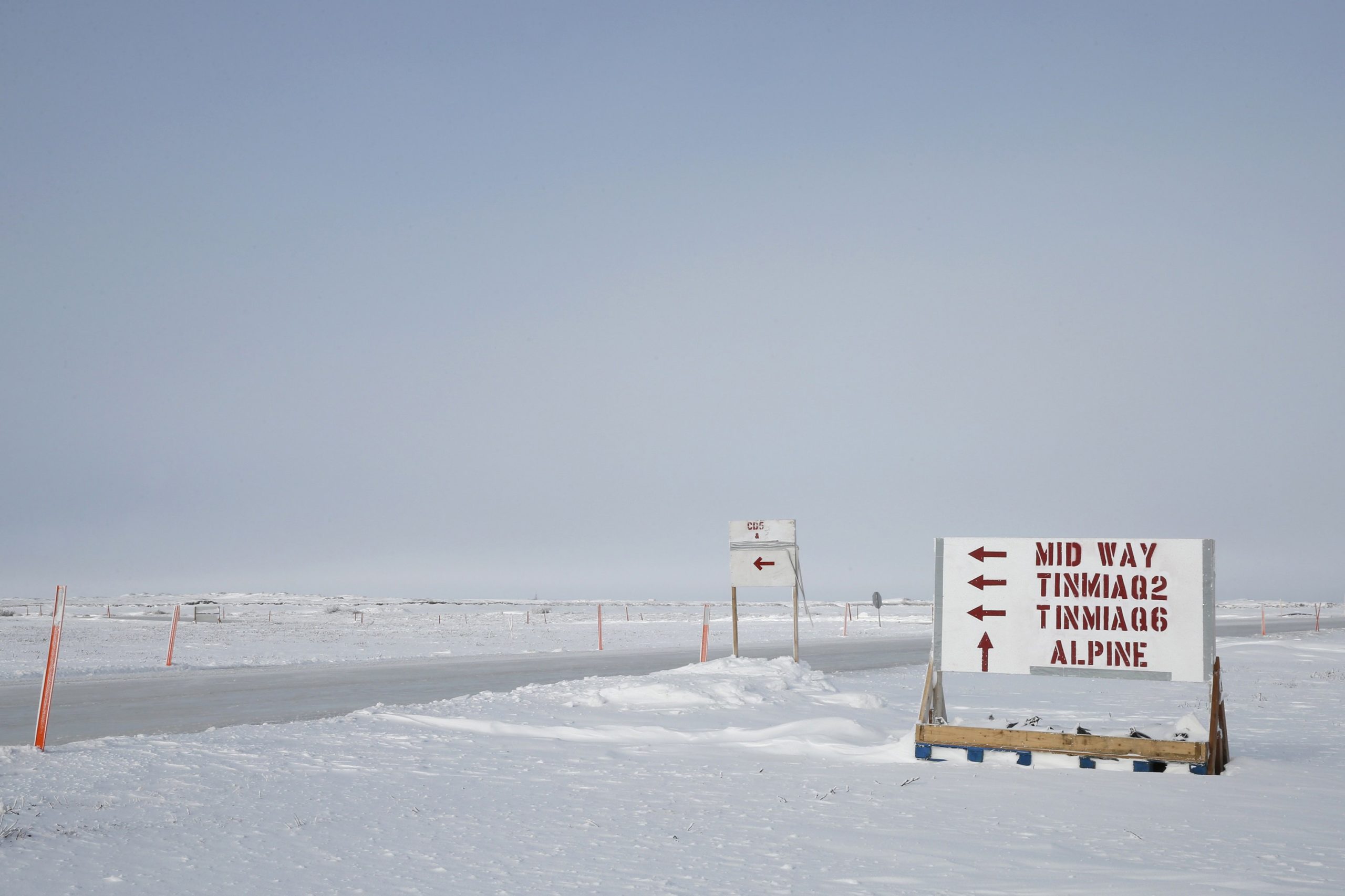As a new review gets underway, the future of a huge Arctic Alaska oil project is uncertain
ConocoPhillips Willow project on Alaska's North Slope is undergoing another environmental review, after a court tossed its previous approval.

As a major new oil project planned for Alaska’s Arctic begins another environmental review, it now faces a less certain future.
The Willow project, being developed by ConocoPhillips, within the National Petroleum Reserve of Alaska, would be the westernmost producing oil field on Alaska’s North Slope. It holds about 600 million recoverable barrels of oil and would have peak production of more than 160,000 barrels per day, according to the company.
But the project is now on hold after a U.S. federal court judge in August overturned the project’s previous federal approval, which came in the waning day of the Trump administration, citing issues with the environmental assessment.
While President Joe Biden immediately halted Trump administration efforts to allow drilling in the Arctic National Wildlife Refuge, his administration initially defended the approval of Willow project (drawing ire from environmental groups opposed to it).
Now that a court has ruled against it, though, it will be up to a federal agency, the Bureau of Land Management, to rewriting its environmental impact study.
The agency announced last week that it is now seeking comments for that supplemental environmental statement. That statement must be completed before any approvals are reissued.
The BLM’s “informal scoping process,” which does not include the public meetings that are normally part of formal scoping, will “provide and opportunity for public input considering the information and analysis to be considered in development of the Supplemental Environmental Impact statement,” Lesli Ellis-Wouters, a BLM spokeswoman, said by email. “We will have a formal review and comment opportunity, including public meetings, following the release of the draft Supplemental Environmental Impact Statement,” she said.
That draft is expected to be released this spring, according to the BLM. Public comments for the informal scoping will be accepted until March 5, according to a Federal Register notice.
A coalition of environmental and Alaska Native organizations has already used the new comment period to urge the cancelation of the whole Willow project.
“Any valid scientific review will show that Willow will have unavoidable and un-mitigatable destructive impacts on the western Arctic’s wildlife and habitat and on the climate. More fundamentally, Willow is contrary to the action necessary to address the climate emergency and is inconsistent with this administration’s priorities and policy commitments. It should not be approved,” said a letter sent to the BLM from the coalition of organizations, some of them plaintiffs in the related lawsuits that produced the August ruling.
Up to now, the Biden administration has been supportive of the Willow project. In court briefs filed in the linked cases, the administration and ConocoPhillips defended the Trump administration’s Willow review and approval. All relevant environmental laws were followed, the administration said.
Neither the administration nor ConocoPhillips, however, opted to challenge Gleason’s ruling. Instead, the BLM launched the supplemental environmental impact statement. When completed, it will be the second such supplemental study; a previous supplemental draft EIS was completed in early 2020 to analyze a change in ConocoPhillips’ plan.
For the company, the BLM announcement of a new public comment period shows movement, a spokeswoman said.
“This announcement demonstrates progress toward completion of a supplemental EIS in response to the August 2021 Alaska District Court ruling,” ConocoPhillips spokeswoman Rebecca Boys said by email.
“ConocoPhillips remains committed to Willow as the next significant North Slope project, and we encourage BLM to proceed in a manner that will minimize additional delay,” Boys said. “Willow is an important project for Alaska with a broad distribution of benefits, and it has strong support from North Slope Borough communities, the State of Alaska, organized labor, and others who seek timely permit approval. “
That echoed comments made in November by the company’s Alaska president, Vincent Lelarge, to an Alaska audience.
“ConocoPhillips remains committed to Willow, working through the legal process, and more specifically working through the issues that were I think identified through the district court ruling,” Lelarge said in his online address to the Resource Development Council of Alaska’s annual conference.
The company intends to keep working through the engineering, cost and schedule analysis in preparation for a final investment decision sometime in 2022, he said then. And he referred to Willow as a future “hub” of North Slope oil operations.
However, there are mixed signals about Willow’s importance to the company.
In ConocoPhillips’ Feb. 3 investor briefing, in which quarterly earnings and future plans were detailed, Willow was not mentioned.
In that briefing, ConocoPhillips Chief Executive Officer Ryan Lance emphasized the company’s commitment to investment in the Lower 48, primarily the Permian Basin.
The only mention of Alaska was regarding the startup of the company’s GMT2 project in the Greater Mooses Tooth Unit in the National Petroleum Reserve-Alaska. Startup there was in December. The field, with expected production of about 30,000 barrels per day, is now the westernmost producing field in Arctic Alaska.
In all, Alaska produced $448 million of ConocoPhillips’ $3 billion in net earnings for the fourth quarter of 2021, according to the company. Lower 48 earnings in the quarter were over $1.7 billion, according to the company’s report. For all of 2021, ConocoPhillips invested $982 million in Alaska projects, which was 18 percent it global capital expenditures and investments, the company said in a separate statement.